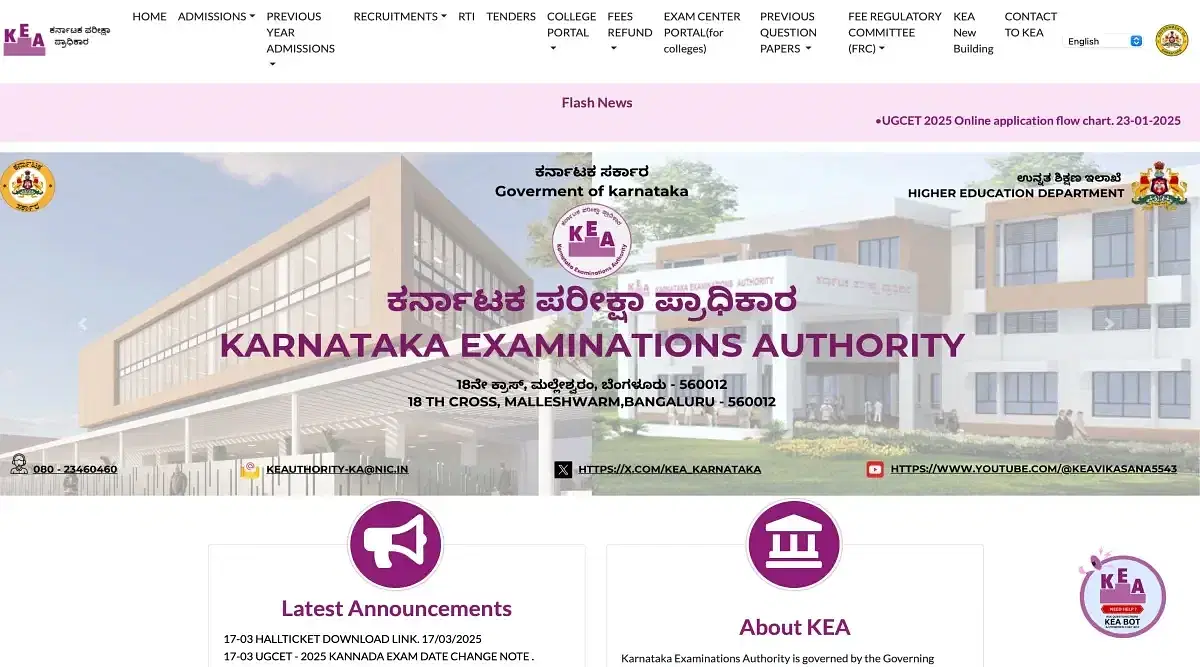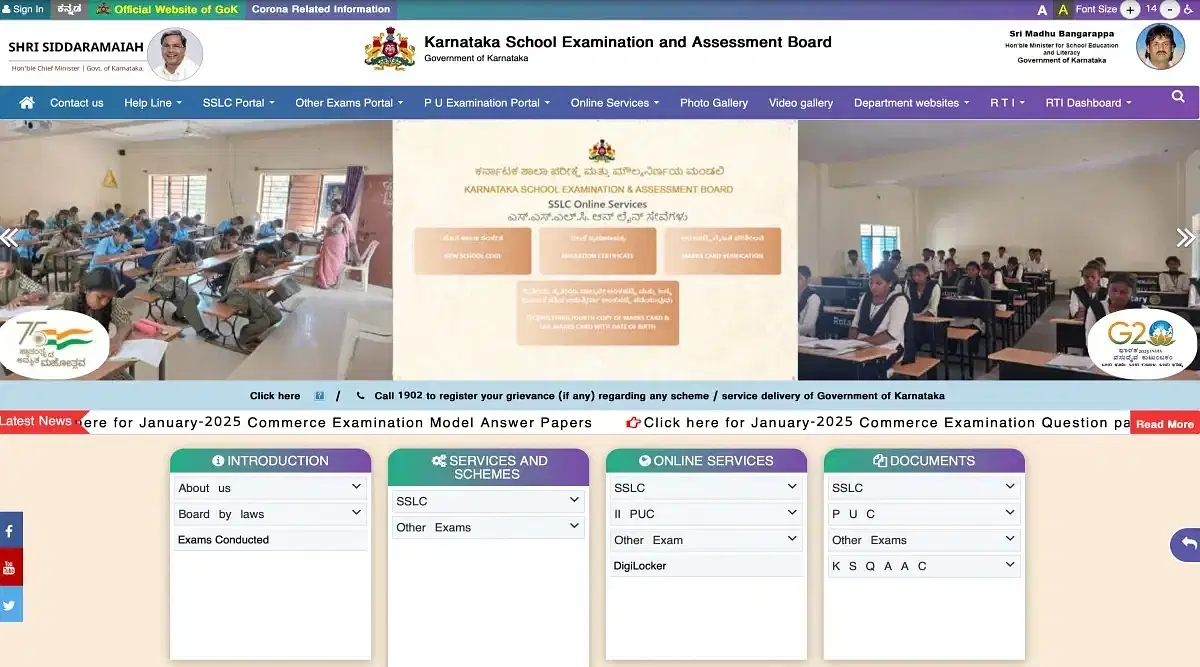Karnataka 2nd PUC Syllabus 2025-26 Released : Download Latest and Revised Karnataka 2nd PUC Syllabus PDF with Subject-wise
The Karnataka PUE Dept. has released the reduced 2nd PUC syllabus for 2025-26. It covers PCMB, Commerce & Arts subjects. Exams include 80-mark theory and 20-mark practical sections, starting March 2026 (tentative). Students must follow the official syllabus and check the exam pattern for optimal preparation.
Table of Contents
The Department of Pre-University, Karnataka, reduced the Karnataka 2nd PUC syllabus 2026 for PCMB, Economics, Business Studies, and Accountancy subjects. The syllabus will help students cover all chapters and topics for all subjects under each stream for an 80-mark theory exam and a 20-mark practical exam.
Candidates should strictly adhere to the Karnataka 2nd PUC 2026 syllabus provided by the board while preparing for the Karnataka 2nd PUC exam 2026, scheduled from March 2026 (tentative). The board exam will contain various types of questions, such as MCQ, short answer, and long answer questions from topics well-allocated from the syllabus.
| Karnataka 2nd PUC Model Papers | Karnataka 2nd PUC Previous Years Question Papers |
Subject-Wise Karnataka 2nd PUC Syllabus 2026
The syllabus for different subjects under streams such as Science, Arts, Commerce, and languages is given in the following section. Students can download the Karnataka 2nd PUC syllabus 2025-26 PDF from the board's official website. However, students should review the Karnataka 2nd PUC exam pattern 2026 and check the topic allocation based on the marking scheme.
Karnataka 2nd PUC 2026 Syllabus for English
Given below is the Karnataka 2nd PUC syllabus for English 2026. There are 13 units in the English syllabus. The topics under the 2nd PUC syllabus 2025-26 Karnataka Board, for English, are mentioned in the table below for reference purposes:
| Unit | Unit Name |
| 1 | Romeo and Juliet |
| 2 | Too Dear |
| 3 | On Children |
| 5 | A Sunny Morning |
| 6 | When You Are Old |
| 7 | The Gardener |
| 10 | Heaven, If You Are Not Earth |
| 11 | Japan And Brazil Through A Traveler's Eye |
| 12 | The Voter |
| 13 | Where There Is A Wheel |
Karnataka 2nd PUC Syllabus 2026 for Maths
The 2nd PUC syllabus 2025-26 Science contains all the topics and chapters under Maths, Physics, Biology, and Chemistry. The 2nd PUC syllabus 2026 for KSEEB class 12 Maths was reduced for the academic year 2026. There are 15 units in all, and some of the topics include Matrices and Determinants, Permutations and Combinations, Probability, Binomial Theorem, Partial Fractions, etc.
Find the detailed Karnataka 2nd PUC 2026 syllabus below.
| Unit | Unit Name |
| 1 | Matrices and Determinants |
| 2 | Permutations and Combinations |
| 3 | Probability |
| 4 | Binomial Theorem |
| 5 | Partial Fractions |
| 6 | Mathematical Logic |
| 7 | Ratio and Proportions |
| 8 | Bill Discounting |
| 9 | Stocks and Shares |
| 10 | Learning Curve |
| 11 | Linear Programming Problems |
| 12 | Sale Tax and Value Added Tax |
| 13 | Heights and Distances |
| 14 | Compound Angles, Multiple Angles, Sub Multiple Angles, and Transformation Formulae |
| 15 | Circles (Points of Intersection of Line & Circle) |
Karnataka 2nd PUC Physics Syllabus 2025-26
The given physics syllabus consists of 13 units with very detailed topics and sub-topics. Some of the units include chapters like Electric charges and fields, Current Electricity, Moving charges and magnetism, etc. Please go through the 2nd PUC 2026 syllabus for Physics given below and study accordingly.
1. Electric charges and fields
Introduction Electric Charge, Conductors and Insulators, Charging by Induction, Basic Properties of Electric Charge, Coulomb’s Law, Forces between Multiple Charges, Electric Field, Electric Field Lines, Electric Flux, Electric Dipole, Dipole in a Uniform External Field, Continuous Charge Distribution, Gauss’s Law, Applications of Gauss’s Law, Field due to infinitely long straight uniformly charged wire, Field due to uniformly charged infinite plane sheet.
2. Electrostatic Potential and Capacitance
Introduction, Electrostatic Potential, Potential due to a Point Charge, Potential due to an Electric Dipole, Potential due to a System of Charges, Equipotential Surfaces, Potential Energy of a System of Charges, Potential Energy in an External Field, Electrostatics of Conductors, Dielectrics and Polarisation, Capacitors and Capacitance, The Parallel Plate Capacitor, Effect of Dielectric on Capacitance, Combination of Capacitors, Energy Stored in a Capacitor.
3. Current Electricity
Resistivity, Limitations of Ohm’s Law, Temperature Dependence of Resistivity, Electrical Energy, Power, Cells, emf, Internal Resistance, Cells in Series and Parallel, Kirchhoff’s Rules, Wheatstone Bridge, Meter Bridge, Potentiometer.
4. Moving Charges and Magnetism
Introduction, Magnetic Force, Motion in a Magnetic Field, Motion in Combined Electric and Magnetic Fields, velocity selector, Magnetic Field due to a Current Element, Biot-Savart Law, Magnetic Field on the Axis of a Circular Current Loop, Ampere’s Circuital Law, The Solenoid and the Toroid, Force between Two Parallel Currents, the Ampere, Torque on Current Loop, Magnetic Dipole, The Moving Coil Galvanometer.
5. Magnetism and Matter
Introduction, The Bar Magnet, The magnetic field lines, Magnetism and Gauss’s Law, The Earth’s Magnetism, Magnetisation, and magnetic intensity.
6. Electronic Induction
Introduction, The Experiments of Faraday and Henry, Magnetic Flux6.4 Faraday’s Law of Induction, Lenz’s Law and Conservation of Energy, Motional Electromotive Force, Energy Consideration: A Quantitative Study, Eddy Currents, Inductance, AC Generator.
7. Alternating Current
Introduction, AC Voltage Applied to a Resistor, Representation of AC Current and Voltage by Rotating Vectors - Phasors, AC Voltage Applied to an Inductor, AC Voltage Applied to a Capacitor, AC Voltage Applied to a Series LCR Circuit, LC Oscillations, Transformers.
8. Electromagnetic Waves
Introduction, Electromagnetic Waves, Electromagnetic Spectrum.
9. Ray Optics and Optical Instruments
Introduction, Refraction, Total Internal Reflection, Refraction at Spherical Surfaces and by Lenses, Refraction through a Prism, Some Natural Phenomena due to Sunlight, the rainbow,and Optical Instruments (except resolving power microscope and astronomical telescope).
10. Wave Optics
Introduction, Huygens Principle, Refraction and Reflection of Plane Waves using Huygens Principle, Coherent and Incoherent Addition of Waves.
11. Dual Nature of radiation and matter
Introduction, Electron Emission, Photoelectric Effect, Experimental Study of Photoelectric Effect, Photoelectric Effect and Wave Theory of Light, Einstein’s Photoelectric Equation: Energy Quantum of Radiation, Particle Nature of Light: The Photon, Wave Nature of Matter.
12. Atoms
Introduction Experiment, Alpha particle Scattering and Rutherford’s Nuclear Model of Atom, Atomic Spectra, Bohr Model of the Hydrogen Atom, The Line Spectra of the Hydrogen Atom, De Broglie’s Explanation of Bohr’s Second Postulate of Quantisation.
13. Semiconductor Electronics: Materials, Devices and Simple Circuits
Introduction, Classification of Metals, Conductors and Semiconductors, Intrinsic Semiconductor, Extrinsic Semiconductor.
Karnataka 2nd PUC Syllabus 2025-26 For Chemistry
There are 11 units in the Karnataka 2nd PUC exam 2026 syllabus For Chemistry, and there are various sub-topics under these units. Find below the 2nd PUC Chemistry syllabus 2025-26. The www.pue.kar.nic.in syllabus for Chemistry includes units like Solid-state, Solutions, Electrochemistry, Chemical Kinetics, Surface Chemistry, etc.
1. Solid-state
General Characteristics of Solid State, Amorphous and Crystalline Solids, Classification of Crystalline Solids, Crystal Lattices and Unit Cells, Number of Atoms in a Unit Cell, Close Packed Structures, Packing Efficiency, Calculations Involving Unit Cell Dimensions, Imperfections in Solids
2. Solutions
Types of Solutions, Expressing Concentration of Solutions, Solubility, Vapour Pressure of Liquid Solutions, Ideal and Non-ideal Solutions, Colligative Properties and Determination of Molar Mass.
3. Electrochemistry
Electrochemical Cells, Nernst Equation, Conductance of Electrolytic Solutions, Electrolytic cells, and Electrolysis (excluding the elementary idea of laws of electrolysis)
4. Chemical Kinetics
Rate of a Chemical Reaction, Factors Influencing Rate of a Reaction, Integrated Rate Equations
5. Surface Chemistry
Adsorption, Colloids, Classification of Colloids, Colloids Around Us
6. General Principles and Processes of Isolation of Elements
7. p-block elements
Group 15 Elements, Dinitrogen, Ammonia, Oxides of Nitrogen (excluding structure), Nitric Acid, Group 16 Elements, Dioxygen, Simple Oxides, Ozone, Sulphur – Allotropic Forms, Sulphur Dioxide, Oxoacids of Sulphur, Sulphuric Acid; chemical Properties use, Group 17 Elements, Chlorine, Hydrogen Chloride, Oxoacids of Halogens, Interhalogen Compounds, Group 18 Elements
8. d and f Block Elements
Position in the Periodic Table, Electronic Configurations of the d-Block Elements, General Properties of the Transition, Elements (d-Block), The Lanthanoids: Electronic configuration, oxidation states, Llanthanoids contraction, reasons and consequences, The Actinoids; Actinoid contraction, Some Applications of d- and f-Block Elements
9. Coordination Compounds
Werner's Theory of Coordination Compounds, Definitions of Some Important Terms Pertaining to Coordination Compounds, Nomenclature of Coordination Compounds, Bonding in Coordination Compounds, Bonding in Metal Carbonyls, Stability of coordination compounds
10. Haloalkanes and Haloarenes
Classification, Nomenclature, Nature of C–X Bond, Methods of Preparation, Physical Properties, Chemical Reactions
11. Alcohols, Phenols and Ethers
Classification, Nomenclature, Structures of Functional Groups, Alcohols and Phenols, Ethers
Karnataka 2nd PUC Biology Syllabus 2026
The Karnataka 2nd PUC 2026 Syllabus for Biology is divided into 5 units. The chapter-wise topics under each unit are illustrated in the table below.
| Unit Name | Chapter Number | Name of the Chapter | Details of the Chapter |
| Reproduction | 1 | Reproduction in Organisms | Modes of Reproduction, Sexual and Asexual Reproduction, Reproductive health and Birth Control |
| 2 | Sexual Reproduction in Flowering Plants | Flower Structure, Pollination and Fertilisation, Seed and Fruit Formation, Polyembryony | |
| 3 | Human Reproduction | Reproductive Systems of Male and Female, Gametogenesis, Menstrual Cycle, Pregnancy, Parturition, Lactation | |
| 4 | Reproduction and Strategies | Population Explosion, Contraceptive Methods, Medical Termination of Pregnancy, Sexually Transmitted Diseases, Infertility | |
| Genetics and Evolution | 5 | Principles of Inheritance and Variation | Mendelian Inheritance, Mutation, Genetic Disorder, Chromosomal, Theory of Inheritance |
| 6 | Molecular Basis of Inheritance | DNA Structure, Replication, Genetic Code, Transcription, Gene Expression, DNA Fingerprinting | |
| 7 | Evolution | Origin of Life, Theories of Evolution, Evidence of Evolution, Adaptive Radiation, Human Evolution | |
| Biology and Human Welfare | 8 | Human Health and Disease | Common viral, bacterial, protozoal disease, Immunity and immune systems in humans, AIDS, Cancer, Drug and Alcohol Abuse |
| 9 | Strategies for Enhancement in Food Production | Plant Breeding, Tissue Culture, Animal Husbandry, Apiculture, Pisciculture, Sericulture | |
| 10 | Microbes in Human Welfare | Microbes in Household Products, Industrial Production, Sewage Treatment, Biocontrol agents and Biofertilizers | |
| Biotechnology | 11 | Biotechnology: Principles and Processes | Genetic Engineering, Recombinant DNA Technology, Gene Cloning |
| 12 | Biotechnology and its Application | Application of Biotechnology in Agriculture and Medicine, Genetically Modified Organisms | |
| Ecology | 13 | Organism and Population | Population Ecology, Ecological Adaptations, Population Interactions |
| 14 | Ecosystem | Structure and Function of Ecosystem, Productivity, Nutrient Cycle, Decomposition, Ecological Pyramid | |
| 15 | Biodiversity and Conservation | Biodiversity, Conservation of Biodiversity, Biodiversity Hotspots, Endangered Species, Extinction | |
| 16 | Environmental Issues | Pollution, Ozone Depletion, Global Warming, Deforestation, Sustainable Development, Solid Waste Management |
Karnataka 2nd PUC Syllabus for Computer Science
The revised Karnataka 2nd PUC Class 12th Computer Science syllabus contains four chapters. The chapter-wise topics are given in the table below.
| Chapter Number | Name of the Chapter | Topics Covered |
| Chapter: 1 | Backdrop of Computers | Typical Configuration of Computer System Organization, Boolean Algebra, Data Structures |
| Chapter: 2 | Computing in C++ | Object Oriented Programming in C++, OPPs concept, Classes and Objects, Function Overloading, Constructors and Destructors, Inheritance, Pointers, Data File Handling |
| Chapter: 3 | Large Data, Database, and Query | Database Concepts, SQL Commands |
| Chapter: 4 | Advanced Concepts in Communication Technology | Networking Concepts, Internet and Open Source Concepts, Web Designing |
Karnataka 2nd PUC Syllabus 2025-26 for Electronics
Some topics in Electronics include Transistor Amplifiers, Oscillators, Feedback in Amplifiers, Transistor Amplifiers, etc. Students can check the 2nd PUC syllabus 2026 for Electronics given below:
| Unit | Unit Name |
| 1 | Field Effect Transistor |
| 2 | Bipolar Junction Transistor (BJT) Biasing |
| 3 | Transistor Amplifiers |
| 4 | Feedback in Amplifiers |
| 5 | Operational Amplifier |
| 6 | Oscillators |
| 7 | Wireless Communication |
| 8 | Modulation and Demodulation |
| 9 | Digital Electronics |
Karnataka 2nd PUC 2026 Business Studies Syllabus
The 2nd PUC syllabus 2025-26 commerce Science includes all the topics and chapters under Accountancy and Business Studies. Business studies consist of parts 1 and part 2. Please go through both the parts and know the topics well. Some important topics of Karnataka 2nd PUC syllabus 2025-26 for Business Studies include Principles of Management, Business Environment, Organising, Controlling, Staffing, Financial Management, etc.
| Unit | Unit Name |
| Part I | |
| 1 | Nature and Significance of Management |
| 2 | Principles of Management |
| 3 | Business Environment |
| 4 | Planning |
| 5 | Organising |
| 6 | Staffing |
| 7 | Directing |
| 8 | Controlling |
| Part II | |
| 9 | Financial Management |
Karnataka 2nd PUC 2025-26 Syllabus For Accountancy
The PUC board Karnataka syllabus for Accountancy contains two parts. Important topics included in the syllabus are Accounting for Not-for-Profit Organisation, Accounting for Partnership: Basic Concepts, Reconstitution of a Partnership Firm - Retirement/Death of a Partner, Dissolution of Partnership Firm, Financial Statement of Company, etc.
The parts and the units under the 2nd PUC Accountancy syllabus 2025-26 are mentioned in the table below.
| Unit | Unit Name |
| Part I | |
| 1 | Accounting for Not-for-Profit Organisation |
| 2 | Accounting for Partnership: Basic Concepts |
| 3 | Reconstitution of a Partnership Firm - Admission of a Partner |
| 4 | Reconstitution of a Partnership Firm - Retirement/Death of a Partner |
| 5 | Dissolution of Partnership Firm |
| Part II | |
| 1 | Accounting for Share Capital |
| 3 | Financial Statement of Company |
Karnataka 2nd PUC 2026 Syllabus for Economics
Economics is divided into Microeconomics and Macroeconomics. Check the 2nd PUC syllabus for Economics which is mentioned below.
| Unit | Unit Name |
| Part I - Microeconomics | |
| 1 | Introduction |
| 2 | Theory of Consumer Behavior |
| 3 | Production and Cost |
| 4 | Theory of the Firm under Perfect Competition |
| Part II - Macroeconomics | |
| 1 | Introduction |
| 2 | National Income Accounting |
| 3 | Money and Banking |
| 4 | Determination of Income and Employment |
Syllabus
A total of 13 chapters are included in the Karnataka 2nd PUC Class 12th Geography Syllabus. The chapter-wise topics are as follows.
Human Geography
- Study of the relationship between humans and the environment.
- Different cultural landscapes around the world.
- Adaptation and modification of the environment for human use.
- Key areas of Human Geography, such as social, economic, and political aspects.
World Population
- Distribution of people across the globe.
- Factors that affect where people live, such as climate and resources.
- Population density
- Stages of population growth over time.
- Challenges related to population growth and efforts to manage it.
- Population structure based on age, gender, and occupation.
Human Economic Activities
- Overview of different types of work: farming, manufacturing, services, and more.
- How natural resources, technology, and government policies influence work.
Transport and Communication
- Various forms of transport, including roads, railways, airways, and waterways.
- The importance of transport systems for trade and economic growth.
- Development of modern communication methods like phones, the internet, and satellites.
- How transport and communication link countries and promote global connections.
- Issues faced by transportation.
Human Settlements
- Differences between rural and urban settlements.
- Urbanisation and the growth of cities, along with its causes and effects.
- Problems in urban areas, such as slums, pollution, and poor infrastructure.
Population of India
- Population distribution and growth trends in India.
- Changing demographic patterns over time.
- India's population composition, including gender ratio, age, and education.
- India's efforts to manage its growing population.
- Migration patterns within the country.
Land and Water Resources
- Different ways land is used, from farming to urban development.
- Issues related to land degradation and soil erosion.
- Sources of water, include rivers, lakes, and groundwater.
- Importance of managing and conserving water resources.
- The role of irrigation and dams in agriculture and water supply.
Agriculture
- Types of farming, from small family farms to large commercial plantations.
- Important crops are grown in different parts of the world and India.
- The impact of modern agricultural methods, such as the Green Revolution.
- Challenges farmers face, including water shortages and market access.
- Government policies aimed at improving agriculture.
Mineral and power resources
- Classification of minerals, including metallic and non-metallic types.
- Major mineral resources, like coal, iron, and oil, and where they are found.
- Different energy sources, both renewable (solar, wind) and non-renewable (coal, oil).
- Challenges related to mining and using these resources sustainably.
Manufacturing Industries
- Different types of industries, such as heavy and light manufacturing.
- Factors that determine where industries are located, including access to raw materials, labor, and markets.
- Key industrial regions of the world and in India.
- Industrial policies in India that aim to boost growth and address challenges.
- Problems associated with industrial growth, such as pollution and unequal development.
Transport, Communication, and Trade
- Importance of trade in connecting countries and driving economic growth.
- Development of national and international trade routes.
- The role of transportation in facilitating trade between regions.
- How modern communication tools are making trade easier and faster.
- Issues like trade imbalances and challenges in transport infrastructure.
Geographical Perspectives on Environmental Issues - planning and sustainable development
- Types of environmental problems, including pollution of air, water, and soil.
- The impact of climate change on different regions.
- Conservation strategies to protect natural resources.
- Sustainable development as a way to balance economic growth with environmental protection.
- Planning for sustainable use of resources in both cities and rural areas.
Representation of Geographical Data
- Ways to show geographical information using maps, graphs, and charts.
- Different types of maps, such as physical, political, and thematic maps.
- Techniques used in map-making, like scale, symbols, and projections.
- Introduction to modern tools like GIS (Geographic Information Systems) and remote sensing.
- How to read and interpret geographical data for better understanding.
Syllabus
The Karnataka 2nd PUC syllabus 2026 for Geology consists of 7 units. Students must check these different sets of units and study accordingly. Some important topics include Igneous Rocks, Sedimentary Rocks, Metamorphic Rocks, Structural Geology, Stratigraphy, etc.
| Unit | Unit Name |
| 1 | Introduction |
| 2 | Igneous Rocks |
| 3 | Sedimentary Rocks |
| 4 | Metamorphic Rocks |
| 5 | Structural Geology |
| 6 | Stratigraphy |
| 7 | Paleontology |
Karnataka 2nd PUC 2025-26 Political Science Syllabus
The Karnataka 2nd PUC Political Science Syllabus 2025-26 includes 33 topics allocated among 9 chapters. The unit-wise chapters and topics according to the current syllabus are provided in the table below.
| Chapters | Units | Topics |
| Chapter 1 | Political Science As a Discipline | Meaning, Definition, Nature, and Scope, Relevance of the study of political science in the contemporary world |
| Chapter 2 | State | Meaning, Definition, and elements of state, Meaning, and distinction between State and Society, State and Associations, State and Nation |
| Chapter 3 | Basic Political Concepts | Introduction, Sovereignty, Liberty, Rights |
| Chapter 4 | Constitution and Government | Constitution, Constitutional Government, Kinds of constitutions, Forms of Government |
| Chapter 5 | Constitution of India | Constituent Assembly, Drafting Committee, Salient features of the Indian constitution |
| Chapter 6 | Legislature | Meaning & Significance, Legislature in India |
| Chapter 7 | Executive | Meaning & Significance, Union Executive in India |
| Chapter 8 | Judiciary | Meaning & Significance, Judiciary in India, Public Interest Litigation |
| Chapter 9 | Democratic Decentralisation | Introduction, Meaning, Importance, 73rd & 74th Constitutional Amendment Acts, Panchayath Raj System (With special reference to Karnataka) |
Karnataka 2nd PUC Reduced Syllabus 2025-26
The board has reduced the Students must cover all the chapters and topics as mentioned in the syllabus as the question papers of the exam will be curated based on the syllabus. Some important points regarding the Karnataka 2nd PUC preparations are as follows.
- Candidates should highlight the important topics while reviewing the syllabus.
- Students should inspect the syllabus frequently to check if any chapter is left to be covered.
- The chapter-wise marking scheme in the syllabus is helpful to know important topics and units.
- Students must revise the whole syllabus before the board exam.
- Candidates can prepare notes for last-minute preparation.
FAQs on Karnataka 2nd PUC Syllabus
Q: What is the total mark allotted for Karnataka 2nd PUC theory exam as per the Karnataka 2nd PUC syllabus 2025-26?
Q: From where can I download the Karnataka 2nd PUC syllabus?
Q: When will the board release the revised Karnataka 2nd PUC syllabus 2025-26?
Q: What type of questions can students expect in their Karnataka 2nd PUC exam?
Q: How long does it take to cover Karnataka 2nd PUC syllabus?

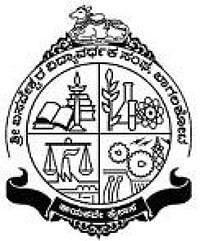

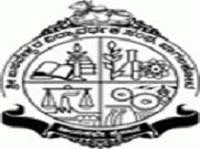
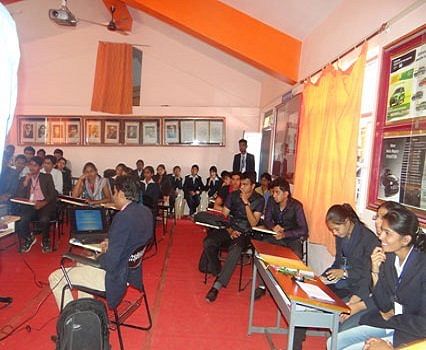

![Shri Basaveshwara Vidya Vardhak Sangha Ayurvedic Medical College, [SBVVSAMC] Bagalkot](https://media.getmyuni.com/azure/college-image/small/shri-basaveshwara-vidya-vardhak-sangha-ayurvedic-medical-college-sbvvsamc-bagalkot.jpg)
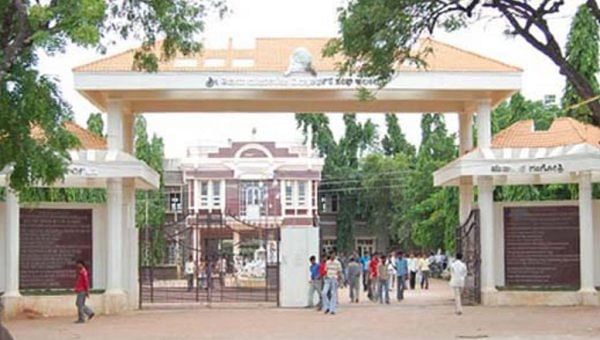
![Shri Vijay Mahantesh Vidya Vardhak Sangha Ayurvedic Medical College, [SVMVVSAMC] Bagalkot](https://media.getmyuni.com/azure/college-image/small/shri-vijay-mahantesh-vidya-vardhak-sangha-ayurvedic-medical-college-svmvvsamc-bagalkot.jpg)















